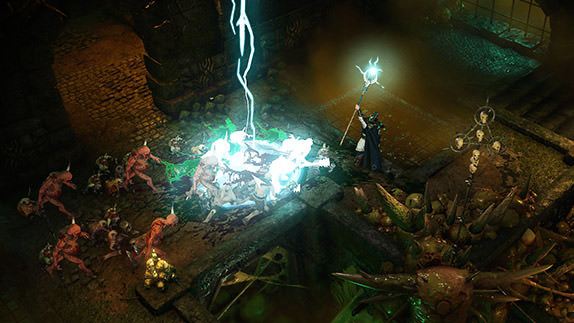Metal Gear Rising: Revengeance Review
 By Kevin Mitchell
Posted on February 19, 2013
By Kevin Mitchell
Posted on February 19, 2013
After the demise of Sons of the Patriots and the surviving private military companies (PMCs) use of nanomachines have dwindled, the cyborg Raiden has found a new place for himself in the world – protecting a Prime Minister in Africa for the Colorado-based Maverick Security PMC. Desperado Enterprises, a PMC group behind numerous terrorist attacks, wants nothing more than to plunge the world once again in war, and soon Raiden using his “tool of justice”, uncovers a deeper motive behind the attack, closely tied to his conflicted past as a child soldier.
Originally starting out as Metal Gear Solid: Rising, Kojima wanted to bridge the gap between Metal Gear Solid 2 and Metal Gear Solid 4, focusing on how Raiden became the tenacious killing machine we know him as, which is a stark contrast to the final product which takes place four years after Guns of the Patriots. Handing off development to PlatinumGames, of Vanquish and Bayonetta fame, Metal Gear Rising: Revengeance rose from the ashes and with it, a new take on the Metal Gear franchise – one that eliminates the need for stealth and replaces it with very refreshing combo-based melee combat.
Trying to rescue the brains of hundreds of children from being used to create an army of advanced cyborg murderers and psychopaths; Raiden utilizes his sword to leave not just a trail of blood but literally buckets full wherever he goes. Releasing a flurry of strikes with his high-frequency katana blade, Raiden uses light and heavy attacks to produce some of the most dazzling and exaggerated combos seen in an action game. Entering the bullet-time state of Blade Mode, Raiden is free to sever limbs, decapitate heads, and literally slice and dice cyborg soldiers at any angle into bits and pieces.
Acquiring unique weapons from various bosses, Raiden can only equip one secondary unique weapon at a time, replacing the heavy strikes from his HF blade. Combos don’t allow weapons to be swapped on the fly, producing a lack of integration between the different weapons. Swapping out the unique weapon, such as the long-range Sai and the multi targeting Pole-arm, requires you to enter the item selection menu, but it can’t be entered if you happen to be in the middle of attacking, jumping or literally anything. Giving in to his rage, activating Ripper Mode allows the glowing red Raiden to freely rip enemies to pieces for a short amount of time.
On defense, Raiden’s ability to block and parry feels rather limited when compared to his offensive capabilities. Having to tilt towards your enemy while attacking simultaneously, Raiden is capable of blocking almost every attack, while parrying requires more precision, but leaves enemies open to counter attacks. Reaching in and pulling out the electrolyte filled spines of his enemies, Raiden refills his health as they explode in his cyborg grip.
Doktor collects left hands. Why? Just Because.
Earning Battle Points (BP) depending on your performance during enemy encounters, your grading is based on various parameters such as time, longest combo, kills and zandatsu maneuvers. The acquired BP can be spent on various stat upgrades for each of Raiden’s main and unique weapon, as well as purchasing new skills or even new outfits.
In typical Metal Gear fashion, the story becomes more convoluted and complex as you progress through the game, as Raiden’s conscience gets the best of him, clouding his judgment about slaughtering nameless soldiers throughout each of the eight chapters. Digging slightly deeper into Raiden’s backstory as a child soldier, Revengeance brings to light the torment that Jack endured and what earned him the nickname Jack the Ripper. It doesn’t answer some of the questions that Metal Gear fans were hoping to be answered. Is Snake really dead? What happened to Raiden’s family? Why are cyborg enhancements considered a better choice than nanomachines? After the credits rolled, I had more questions than I had before starting the game. The shortcomings of the narrative are much easier to shallow due to the overly satisfying feel of the combat.
The chapters are quite linear in nature and are broken up into various sections in which you are graded depending on combat engagements. Occasionally you will find a hidden locale that features new items – or maybe you will find the hidden room full of watermelons, just like the original demo of the game. VR missions can be unlocked by finding intel filled laptops scattered throughout the chapters. The missions can be played at anytime, resetting you back to the previous checkpoint if you are in the middle of a chapter.
Only Raiden can pull off those heels.
I was surprised to see a good amount of subtle humor in the dialogue, which for the most part is accomplished by the wonderful voice acting, although Raiden has a certain edge to his voice that reminds me of David Hayter as Snake. As you would expect in a Metal Geartitle, the over-the-top boss battles shine through as the most enjoyable portions of the game, featuring intense cinematics before and during the fights. Add a rocking metal soundtrack with some of the tracks featuring absolute incredible vocals and the entire presentation rivals the best action games of this generation.
Simply Put
I’ve always been a hug fan of the Metal Gear franchise, even though stealth has never been one of my favorite gameplay mechanics. The quick and agile Raiden has become my new favorite character of the franchise, even though the narrative falls short of expectations from a Metal Gear title. Putting the action to the forefront, it succeeds in providing an engaging experience even after completing the game. Cutting cyborgs to pieces with zandatsu has yet to feel tiring, and with various unlockables and different customizable upgrades to purchase, you would be hard pressed to see everything the game has to offer even after two playthroughs. The blocking component can be clunky at times and the camera doesn’t always keep up with the action, but neither of these takes away enough from the game to ruin the experience.
Note: Metal Gear Rising: Revengeance was reviewed on PlayStation 3. A physical copy of the game was provided by the publisher/developer.




